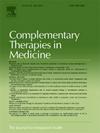针灸相关干预对围绝经期抑郁和焦虑的比较疗效:一项系统综述和频率元分析。
IF 3.5
3区 医学
Q1 INTEGRATIVE & COMPLEMENTARY MEDICINE
引用次数: 0
摘要
背景:本研究旨在比较不同针灸相关干预措施对围绝经期抑郁和焦虑的疗效和安全性,采用频率网络荟萃分析,以确定最有效的治疗策略。方法:系统检索国内外随机对照试验数据库,评价针灸治疗围绝经期抑郁和焦虑的疗效和安全性。根据预先定义的PICOS标准筛选和选择研究。两位审稿人使用CINeMA工具独立进行研究选择、数据提取、偏倚风险评估和证据确定性评估。使用Stata 17.0进行频率网络元分析。连续结局采用平均差异,二元结局采用风险比。评估异质性和一致性,并计算累积排序曲线下的曲面(SUCRA)值,对不同针灸干预措施的比较有效性进行排序。结果:共纳入54项随机对照试验,纳入受试者4406人。纳入的研究主要是中等质量的,很少有低或高偏倚风险。根据CINeMA评估,大多数两两比较的证据确定性被评为低到中等。针灸相关干预在改善临床有效率、抑郁和焦虑症状、更年期症状和激素水平方面优于西药。在临床疗效方面,最有效的干预措施是手针(MA) +中草药(CHM) (RR = 1.52, 95% CI: 1.12-2.08)和电针(EA) +中草药(RR = 1.49, 95% CI: 1.05-2.12)。在汉密尔顿抑郁量表(HAMD)测量的抑郁症状中,EA +西药(MD = -5.04, 95% CI: -6.97 ~ -3.12)和MA + CHM (MD = -5.69, 95% CI: -10.47 ~ -0.92)的减轻效果最大。对于汉密尔顿焦虑量表(HAMA)评估的焦虑症状,EA单独显著降低得分(MD = -8.40, 95% CI: -14.31至-2.49)。在Kupperman指数上,MA + WM (MD = -5.37)和MA + CHM (MD = -5.00)最有效。EA + WM在抑郁自评量表(SDS)得分上也产生了最大的改善(MD = -9.10)。在激素方面,MA + WM显著提高雌二醇(E2)水平(MD = 26.25),而EA + WM和MA + CHM均降低促卵泡激素(FSH)和黄体生成素(LH)水平。SUCRA分析表明,EA + WM和MA + CHM在大多数治疗结果中始终名列前茅。结论:EA + WM和MA + CHM可能是针刺干预围绝经期抑郁和焦虑最有效的方法之一。然而,鉴于证据质量适中,需要进一步的高质量试验来证实这些发现。本文章由计算机程序翻译,如有差异,请以英文原文为准。
Comparative efficacy of acupuncture-related interventions for perimenopausal depression and anxiety: A systematic review and frequentist meta-analysis
Background
This study aimed to compare the efficacy and safety of different acupuncture-related interventions for perimenopausal depression and anxiety using a frequentist network meta-analysis, in order to identify the most effective treatment strategies.
Method
We systematically searched Chinese and international databases for randomized controlled trials evaluating the efficacy and safety of acupuncture for perimenopausal depression and anxiety. Studies were screened and selected based on predefined PICOS criteria. Two reviewers independently performed study selection, data extraction, risk-of-bias assessment, and evaluation of evidence certainty using the CINeMA tool. A frequentist network meta-analysis was conducted using Stata 17.0. Mean differences were used for continuous outcomes and risk ratios for binary outcomes. Heterogeneity and consistency were assessed, and Surface under the cumulative ranking curve (SUCRA) values were calculated to rank the comparative effectiveness of different acupuncture interventions.
Result
A total of 54 randomized controlled trials were included, involving 4406 participants. The included studies were predominantly of moderate quality, with few at low or high risk of bias. According to the CINeMA assessment, the certainty of evidence for most pairwise comparisons was rated as low to moderate. Acupuncture-related interventions showed superior efficacy to Western medicine in improving clinical response rates, depressive and anxiety symptoms, menopausal complaints, and hormone levels. For clinical response, the most effective interventions were manual acupuncture (MA) + Chinese herbal medicine (CHM) (RR = 1.52, 95 % CI: 1.12–2.08) and electroacupuncture (EA) + CHM (RR = 1.49, 95 % CI: 1.05–2.12). Regarding depressive symptoms measured by the Hamilton Depression Scale (HAMD), EA + Western medicine (WM) (MD = –5.04, 95 % CI: –6.97 to –3.12) and MA + CHM (MD = –5.69, 95 % CI: –10.47 to –0.92) achieved the greatest reductions. For anxiety symptoms assessed by the Hamilton Anxiety Scale (HAMA), EA alone significantly reduced scores (MD = –8.40, 95 % CI: –14.31 to –2.49). On the Kupperman Index, MA + WM (MD = –5.37) and MA + CHM (MD = –5.00) were most effective. EA + WM also produced the largest improvement in Self-Rating Depression Scale (SDS) scores (MD = –9.10). Hormonally, MA + WM significantly increased estradiol (E2) levels (MD = 26.25), while both EA + WM and MA + CHM lowered follicle-stimulating hormone (FSH) and luteinizing hormone (LH) levels. SUCRA analysis indicated that EA + WM and MA + CHM consistently ranked among the top treatments across most outcomes.
Conclusion
EA + WM and MA + CHM may be among the most effective acupuncture-based interventions for perimenopausal depression and anxiety. However, given the moderate quality of evidence, further high-quality trials are needed to confirm these findings.
求助全文
通过发布文献求助,成功后即可免费获取论文全文。
去求助
来源期刊

Complementary therapies in medicine
医学-全科医学与补充医学
CiteScore
8.60
自引率
2.80%
发文量
101
审稿时长
112 days
期刊介绍:
Complementary Therapies in Medicine is an international, peer-reviewed journal that has considerable appeal to anyone who seeks objective and critical information on complementary therapies or who wishes to deepen their understanding of these approaches. It will be of particular interest to healthcare practitioners including family practitioners, complementary therapists, nurses, and physiotherapists; to academics including social scientists and CAM researchers; to healthcare managers; and to patients. Complementary Therapies in Medicine aims to publish valid, relevant and rigorous research and serious discussion articles with the main purpose of improving healthcare.
 求助内容:
求助内容: 应助结果提醒方式:
应助结果提醒方式:


